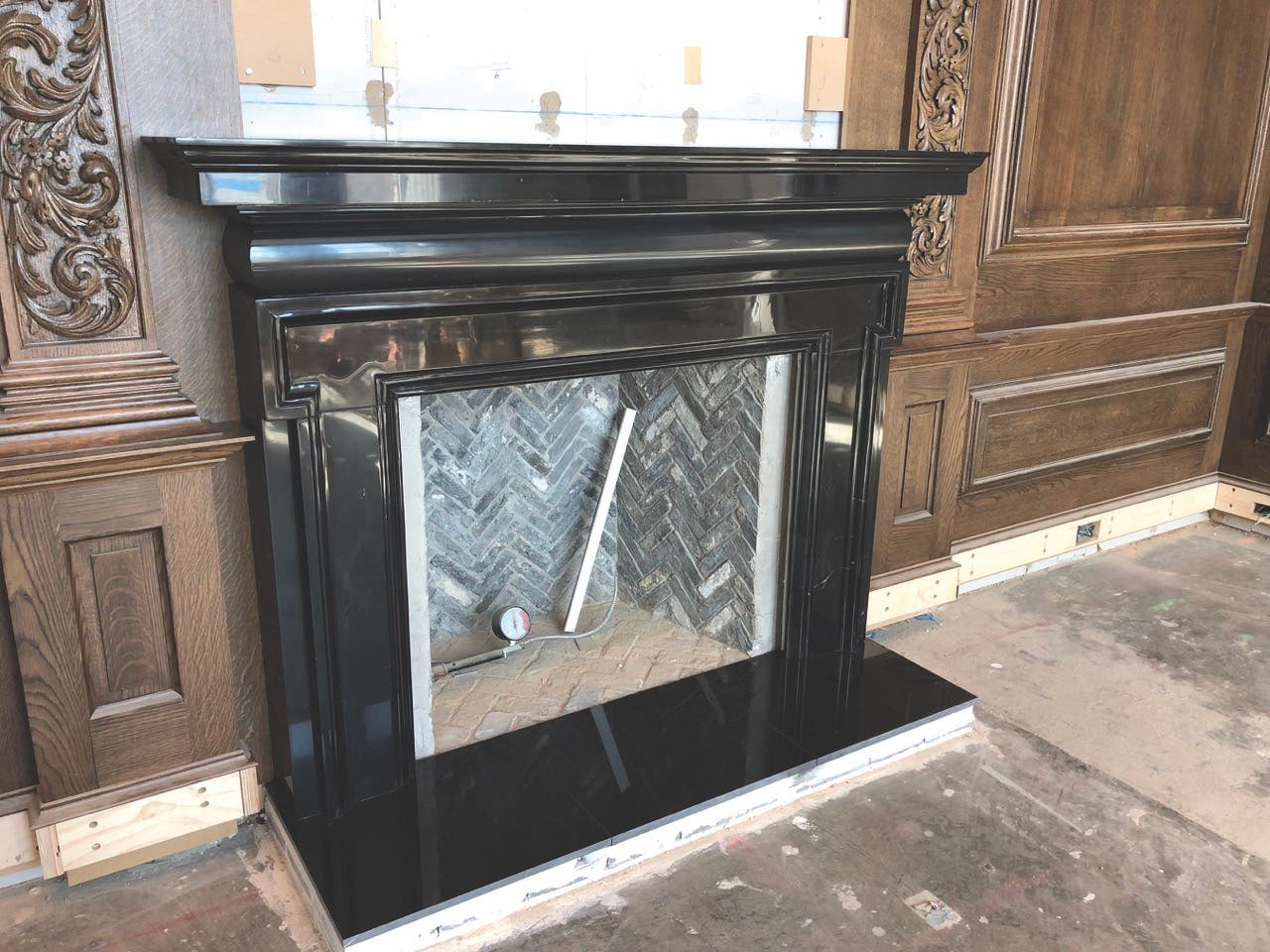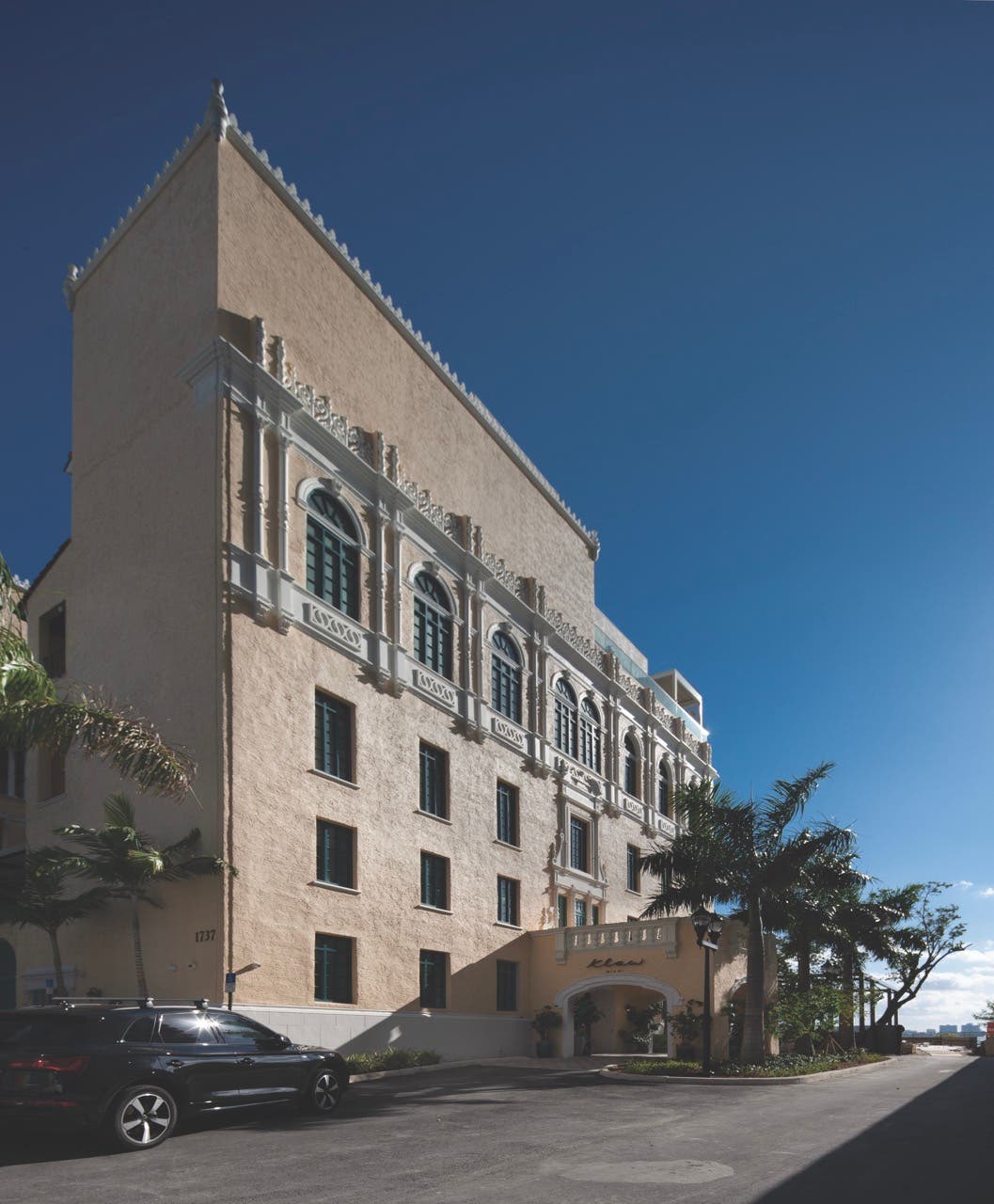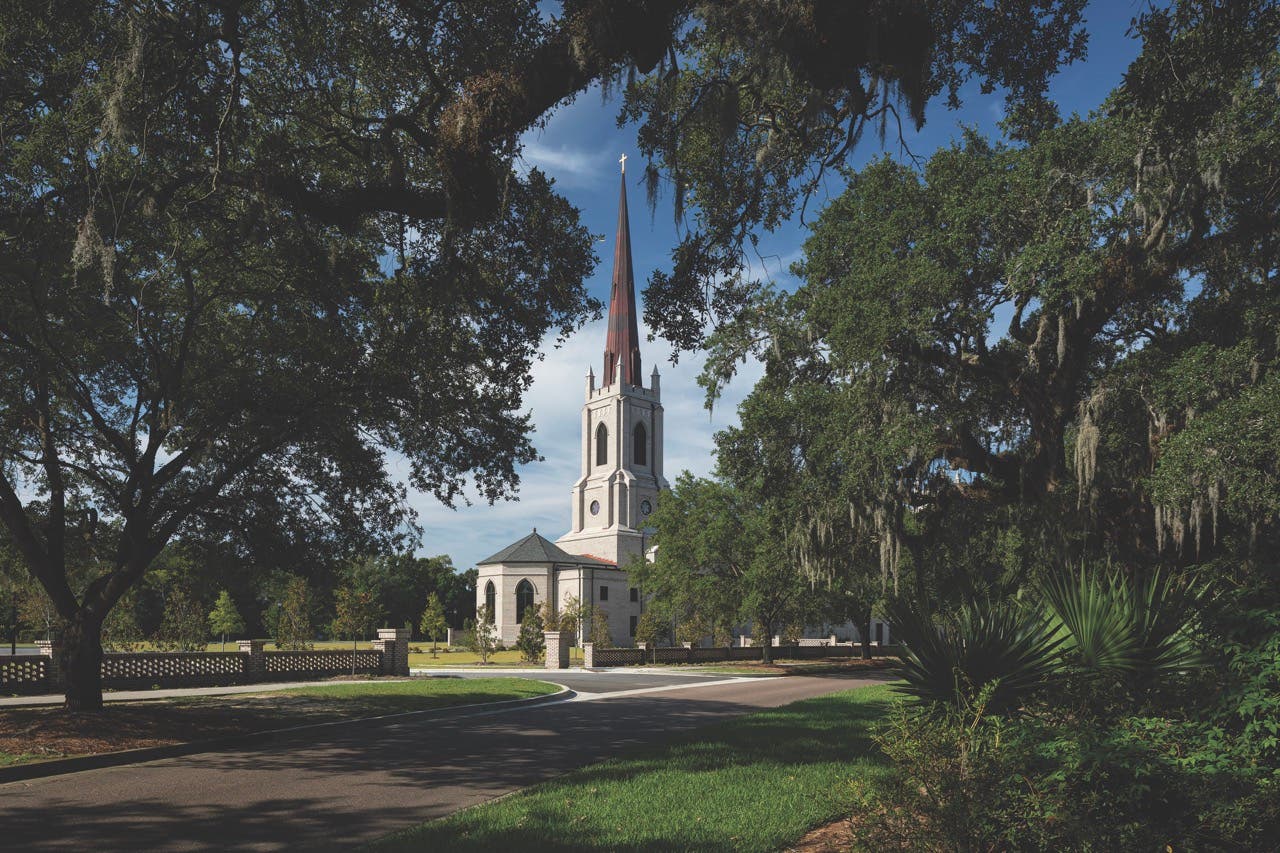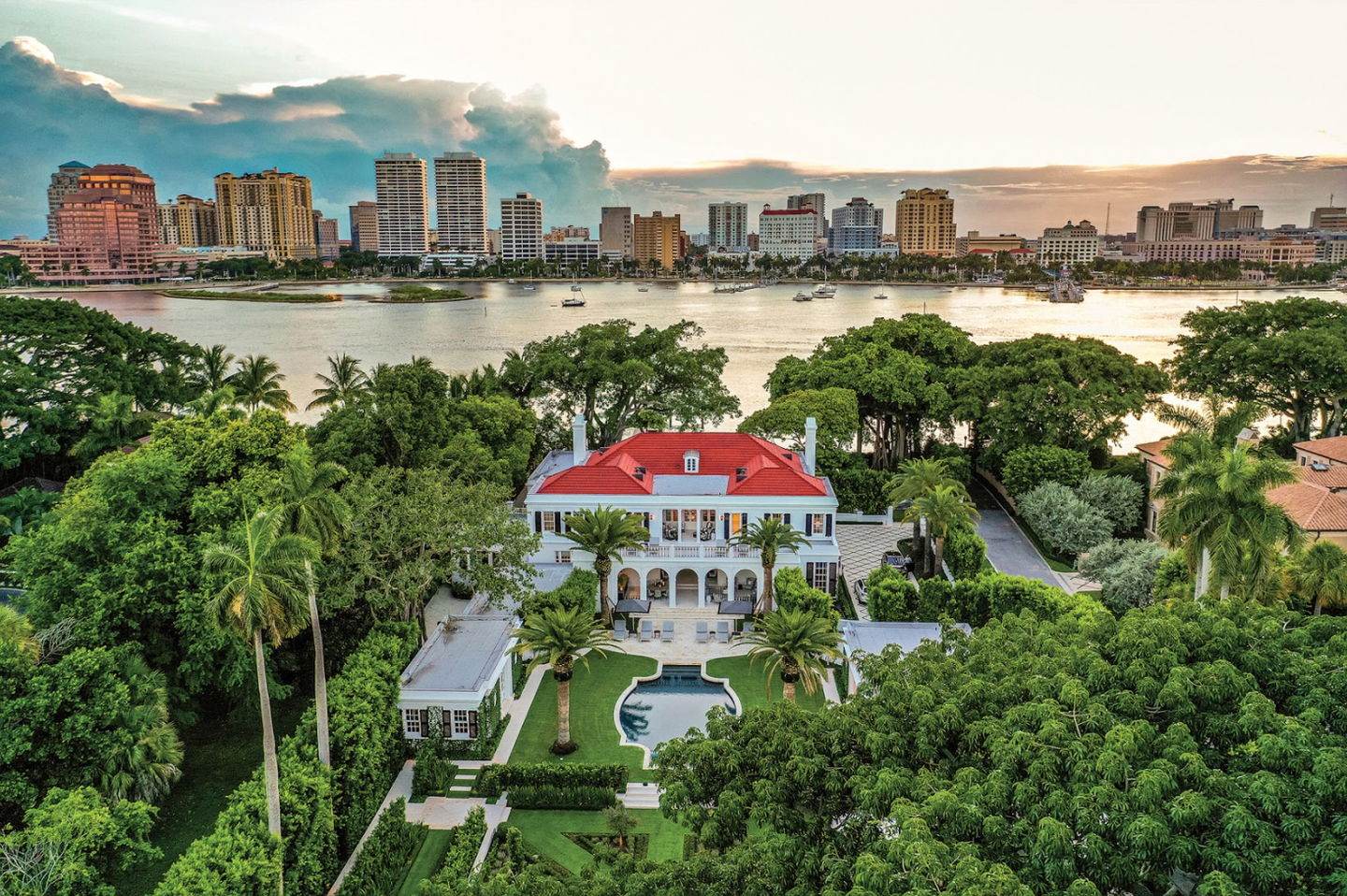
Palladio Awards 2021
Fernando Wong Outdoor Living Design: Landmarked John Volk Estate
A jungle.
That’s what the landscape at the historic 1930s Palm Beach estate looked like when a new owner commissioned Fernando Wong Outdoor Living Design to redesign the gardens.
The grand Adams-style home and gardens originally were designed by noted Palm Beach architect John Volk, whose other surviving work in the town includes the Royal Poinciana Plaza and Playhouse, The Beach Club, major sections of the First National Bank and the arcade buildings to the east of the Everglades Club on Worth Avenue.
“We were initially awestruck by the potential of this sadly dilapidated estate and then by the majesty of the massive 40-foot-tall Ceiba, or Silk Floss tree, in the east garden that is over 130 years old and has a 150-foot canopy spread,” says Fernando Wong, who along with Tim Johnson founded the Palm Beach- and Miami Beach-based firm.
Wong notes that the gardens, which originally stretched from Lake Worth to Coconut Row when the property was much larger, in their day, considered the most extensive in Palm Beach. They are now protected as landmarks by the Town of Palm Beach.
“Given the storied provenance, our immediate goal when we were engaged for the project was to restore the iconic gardens and also make the property livable for an extremely active family almost one hundred years after the original property was built,” he says.
Although specimen trees such as the Ceiba remained on the 3.5-acre property, the gardens bore little resemblance to Volk’s restrained originals.
Because of neglect, the gardens had taken on what Wong calls “a dense tropical forest feel,” with massive walls of golden-trunked Areca palms and other heavy plantings.
That approach, he says, undermined the formal architecture of the house.
“As our client was not a big fan of palm trees or the tropics, we felt it was a good opportunity to clean out the jungle and install Cuban laurel hedges around the property,” he says. “This allowed light in and also made the house with its clean, elegant lines the main attraction once again. It also allowed the Ceiba tree that had so fascinated Volk to be better appreciated, as it now does not have to compete with a dense tropical forest. It stands proudly alone in the northeast corner of the property presiding over a verdant green lawn.”
The back garden, which includes the Ceiba tree, is the most formal area of the grounds. In the English style like the house, it features an ornately-shaped pool and a formal runnel with two fountains that connects the two sides of the landscape.
On the other side of the property, which faces Lake Worth, Fernando and his team—Johnson, Che Wei Kou, and Jason Nunez—opened up the sightlines from the house to the water, a decision that allowed light back into the west lawn.
“We had an embarrassment of riches in this area—it includes a mature lychee tree and two mature banyan trees,” he says.
Although the team left most of Volk’s hardscape intact, two paths were removed and replaced by Diamond Zoysia grass.
“This opened up the landscape and gave the property a lighter feel,” Wong says.
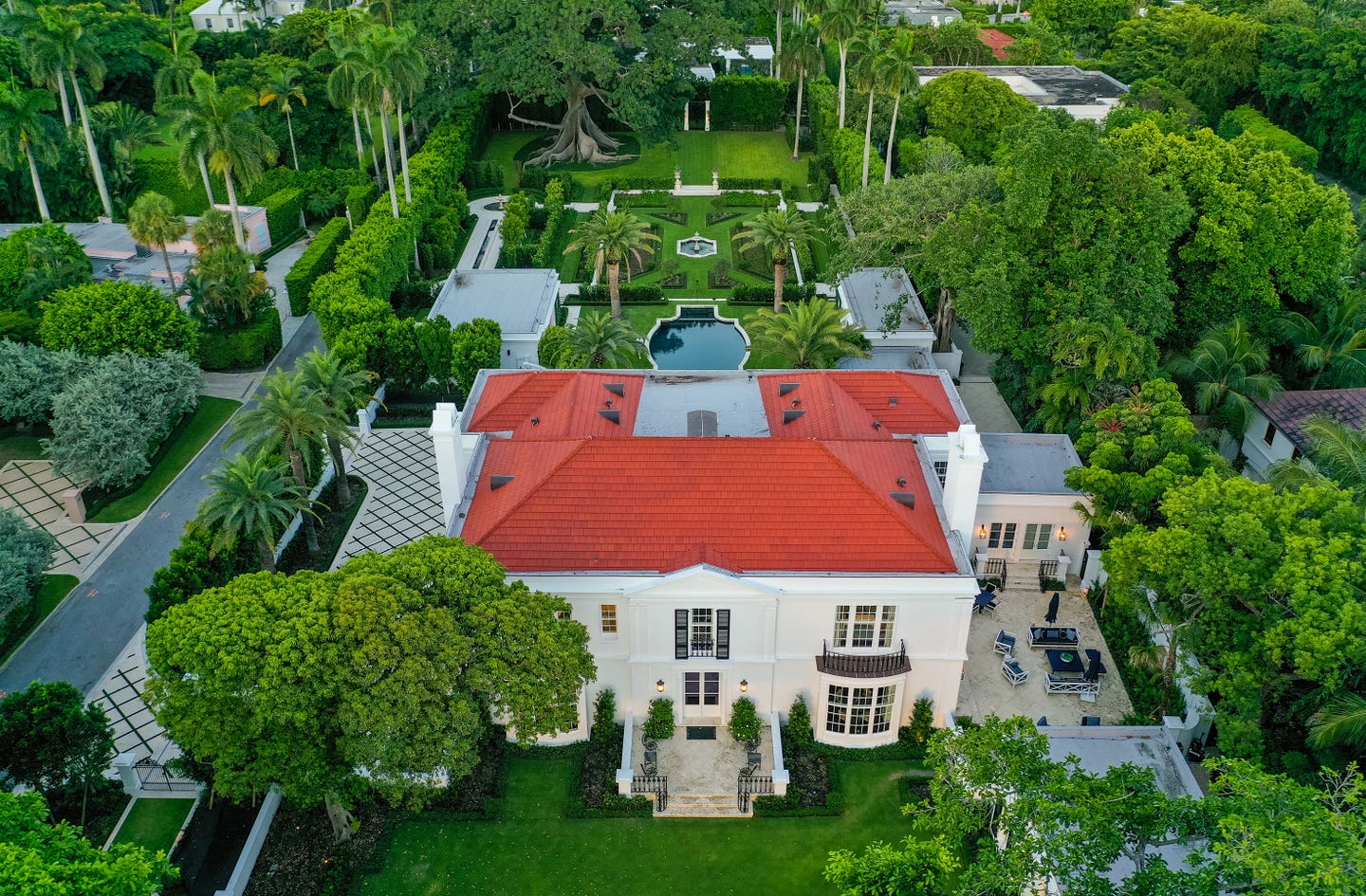
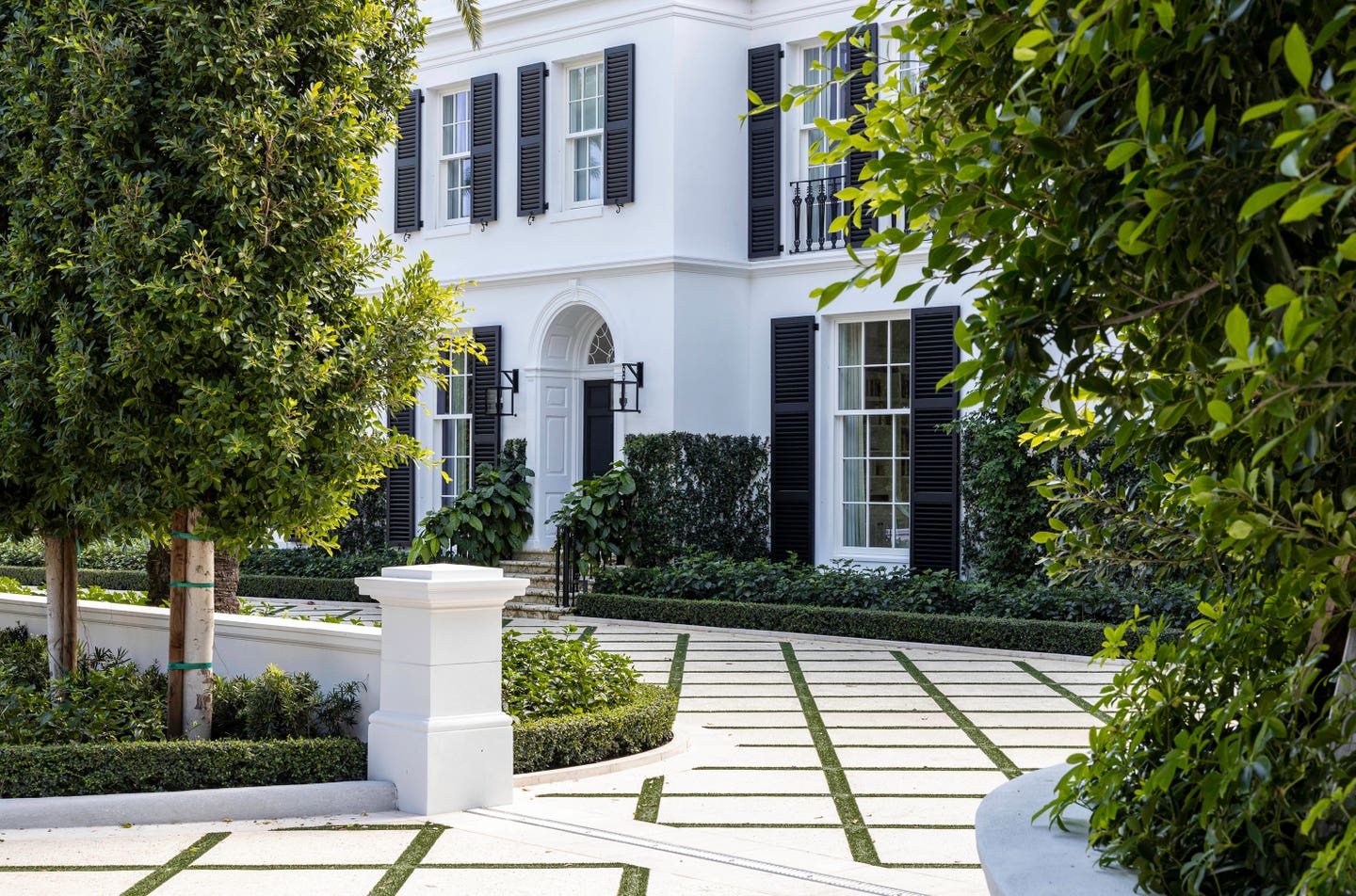
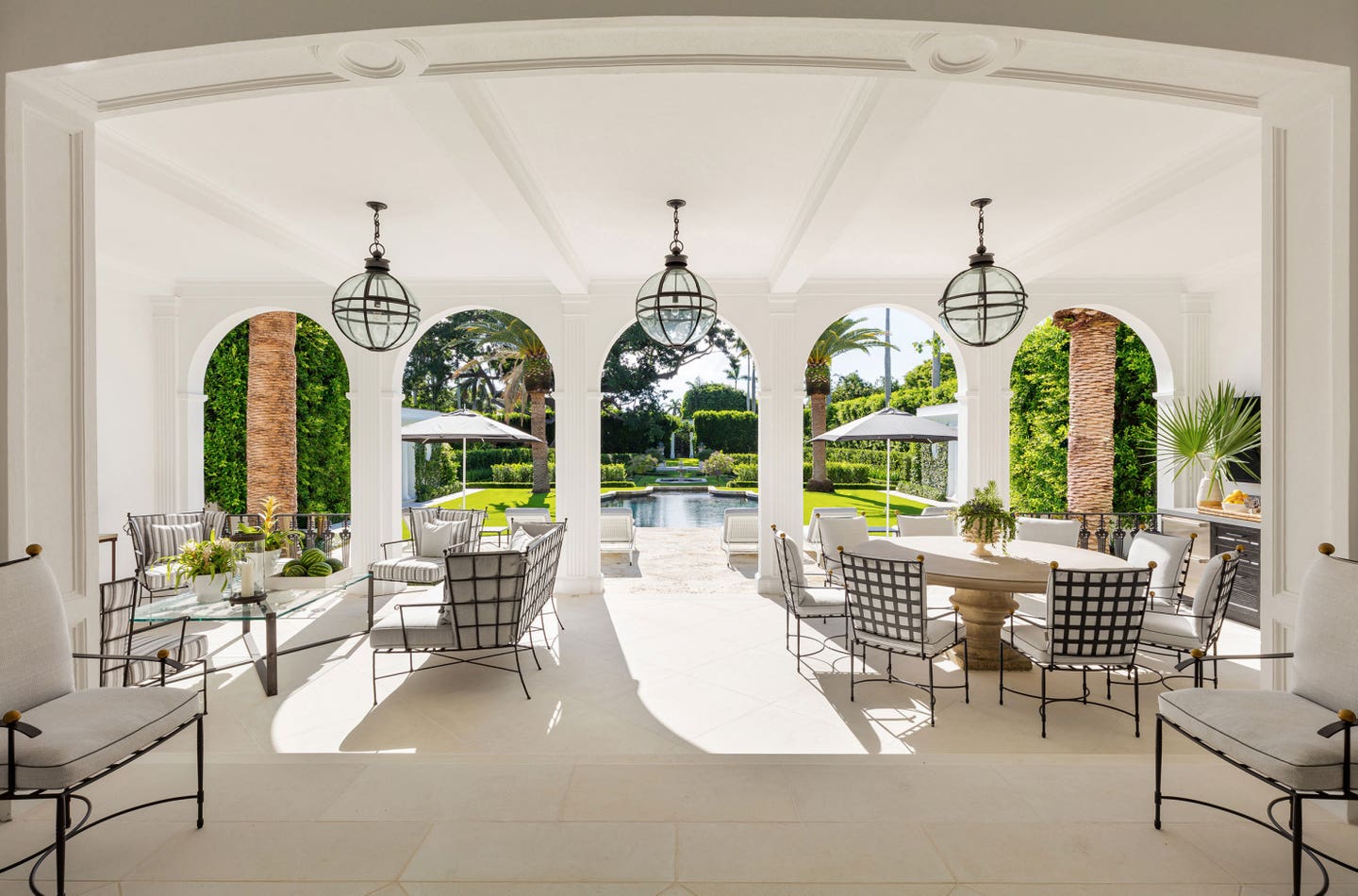
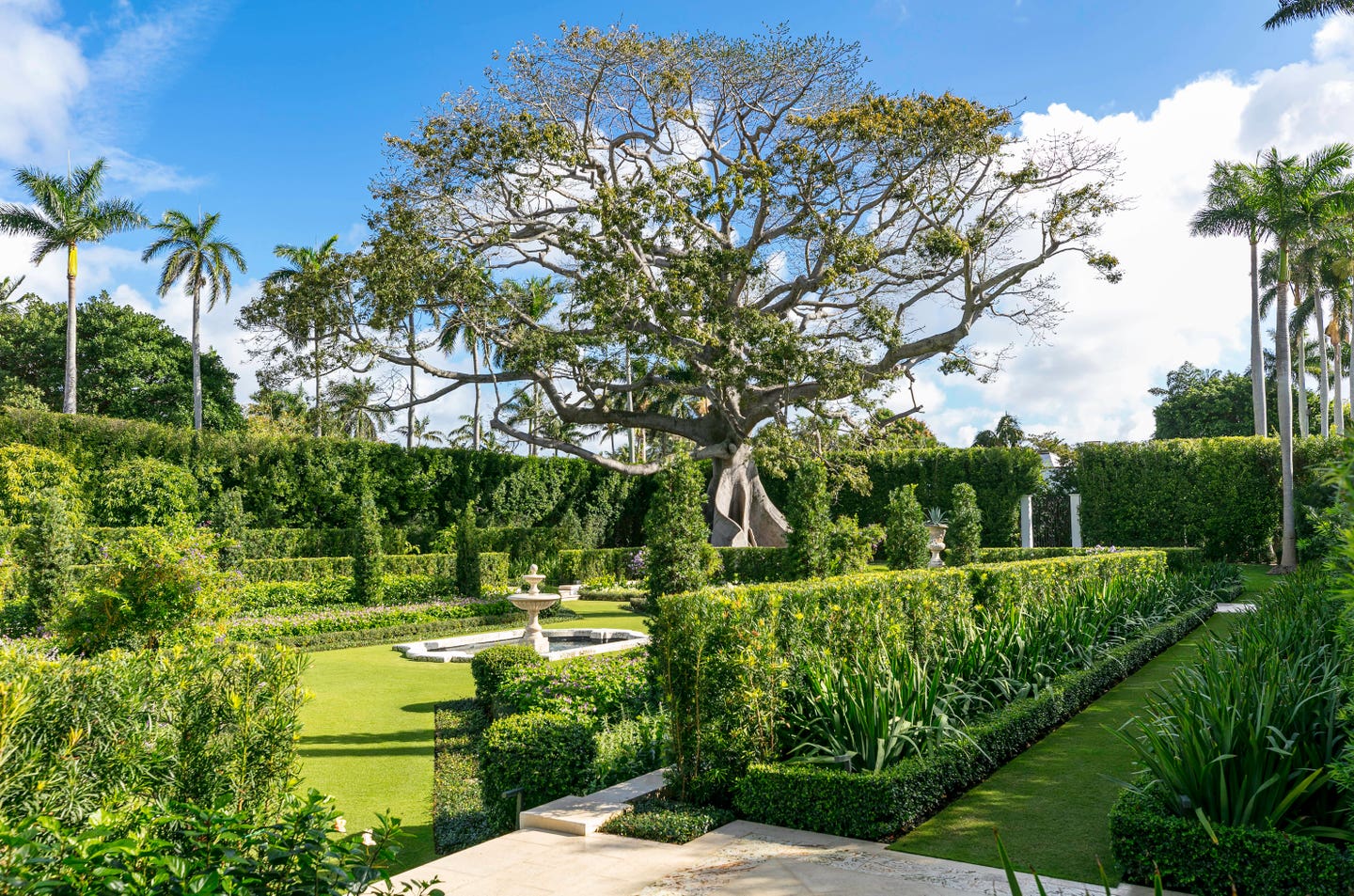
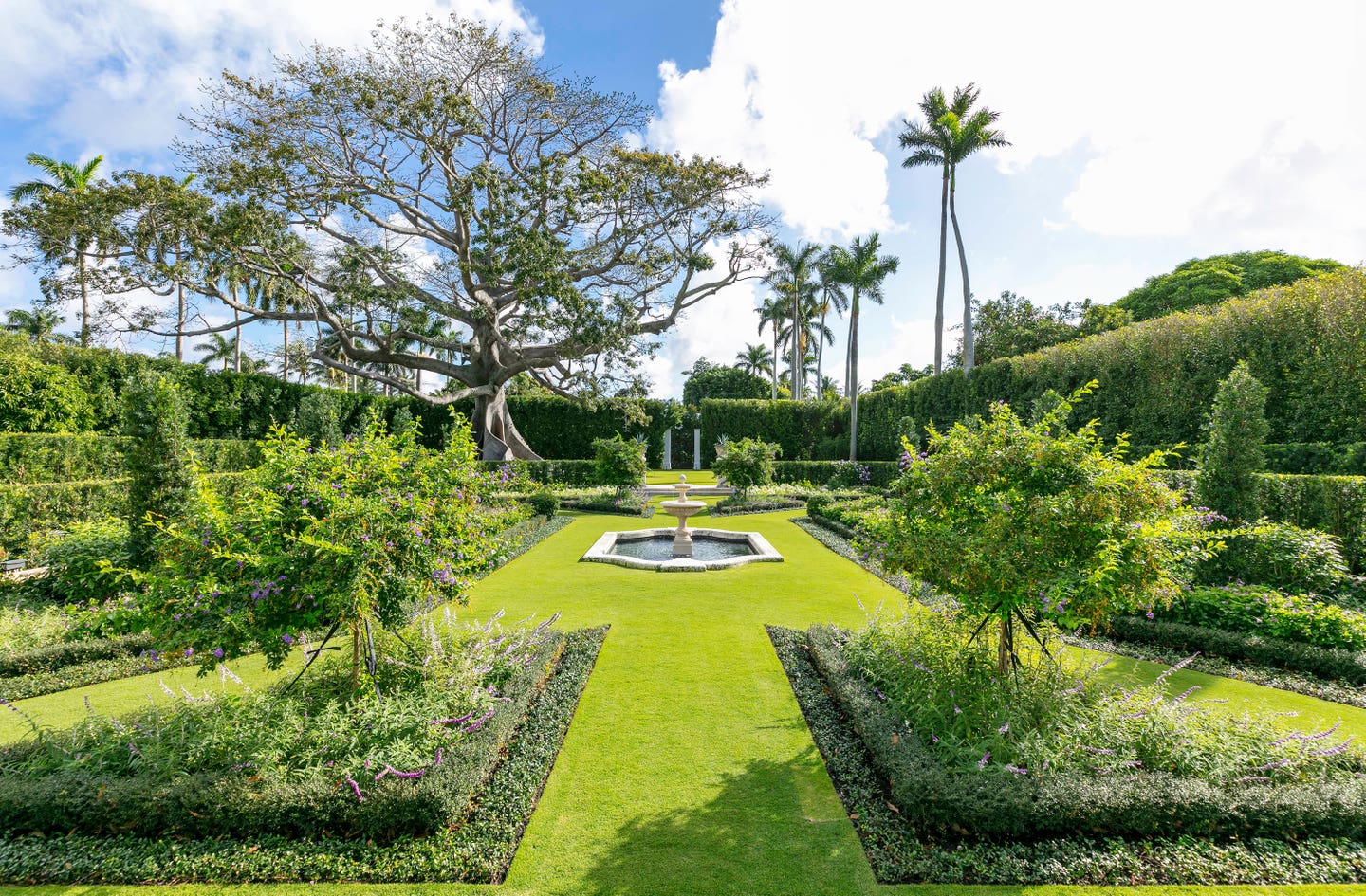
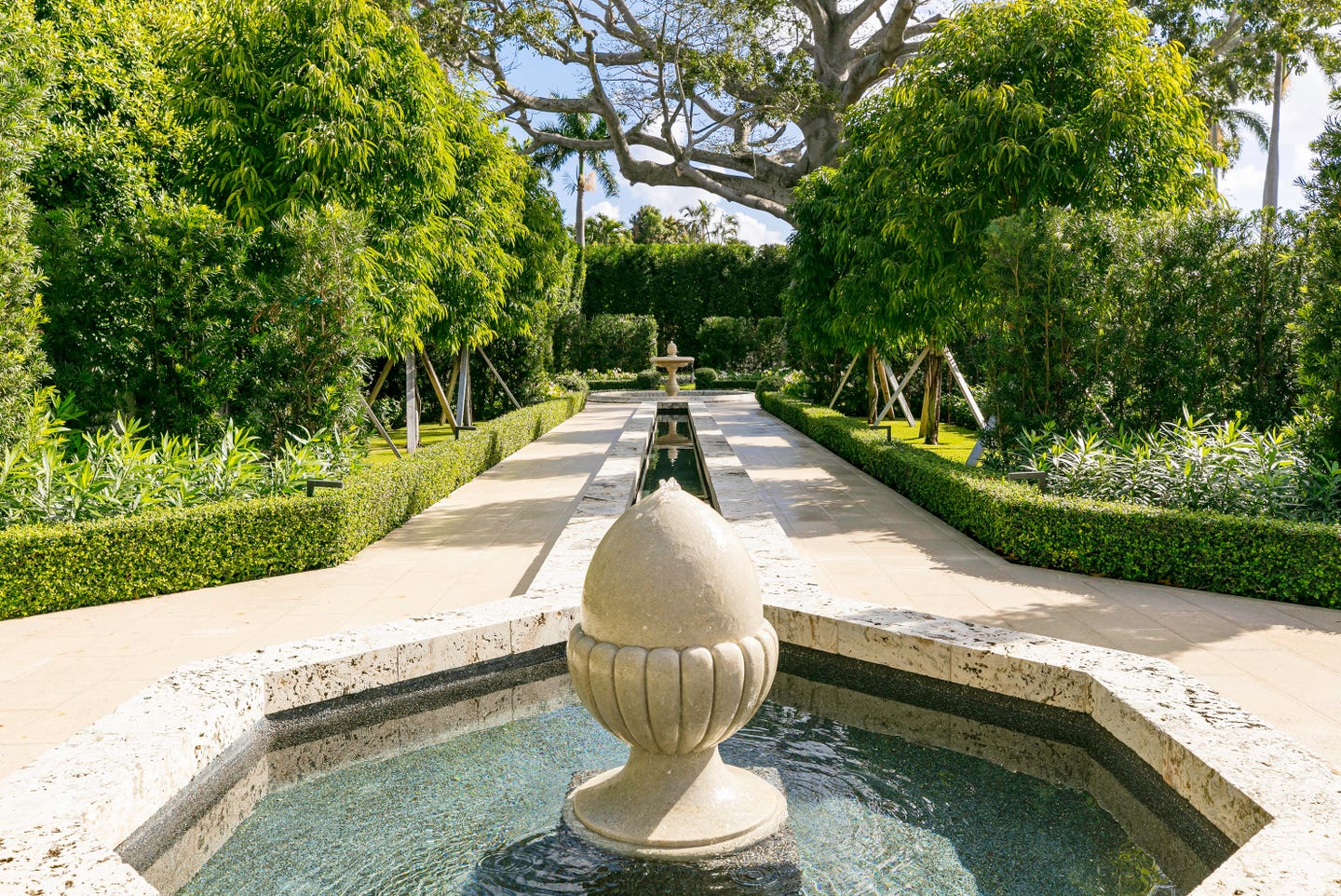
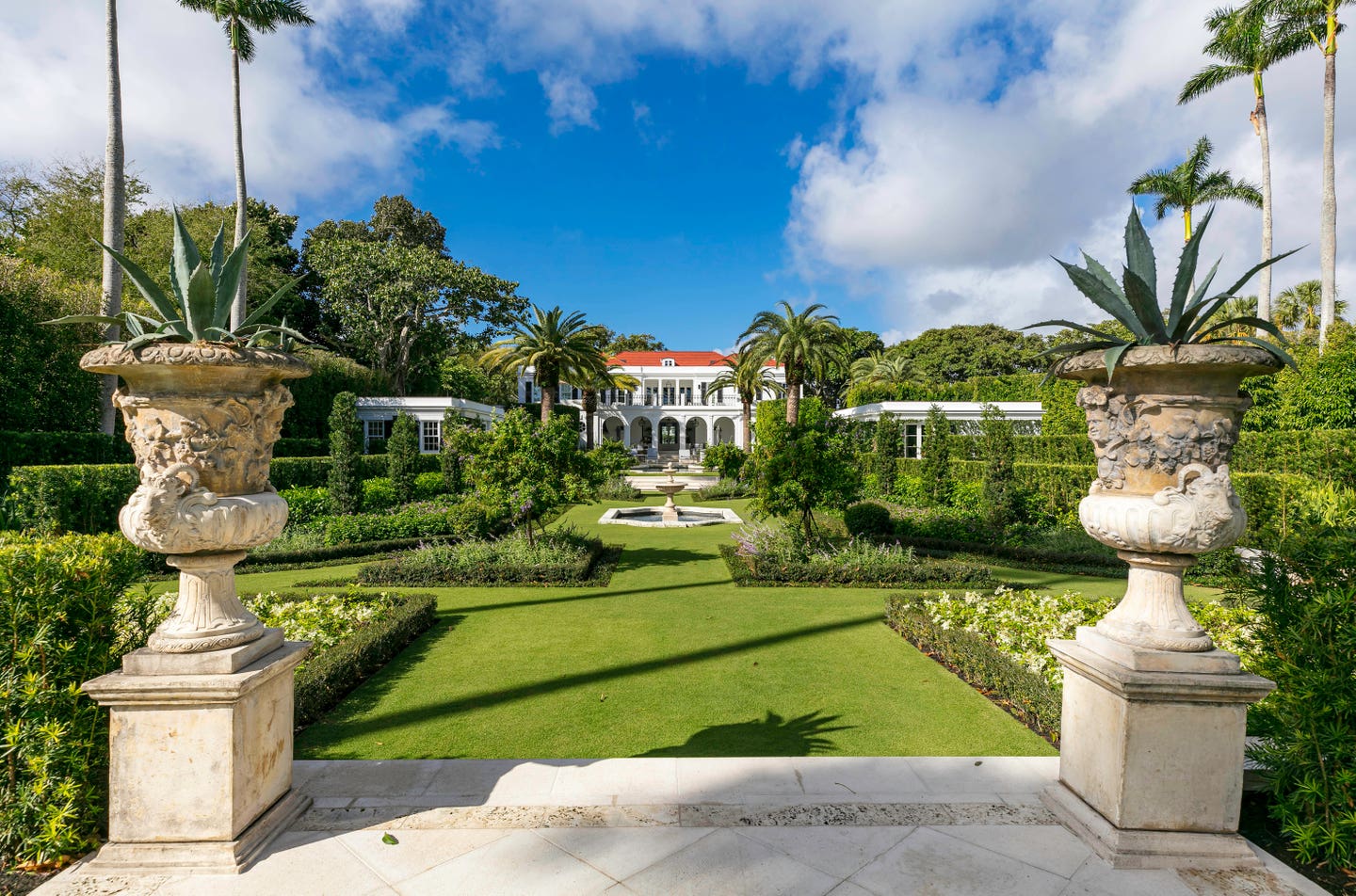
The original gravel driveway, whose texture the owners didn’t like, was replaced with Dominican coral stone pavers with sod joints arranged in a striking white/green diamond pattern, which Wong says is a traditional Palm Beach design.
Again, in deference to the house, Wong strove to keep the plantings simple. Confederate jasmine vines were planted on the house, podocarpus cone trees were sited near the house, and the planting beds were filled with slow-growing Green Island ficus hedges and a variety of ferns.
The subtle color palette of white begonias and white hibiscus accented with the violets and blues of giant Apostle Iris, Blue Sapphire California lilacs, and Mexican sage allows the architecture of the house to shine.
The alterations to the gardens, Wong says, take the property back to its English roots.
“My philosophy about gardens is that they are the frame for the beautiful picture—the house, in this case the historic manor that Volk designed,” he says. “I felt the gardens of this home deserved more formality than they had when I was introduced to them because of changes through the years. Now, they sing.”






